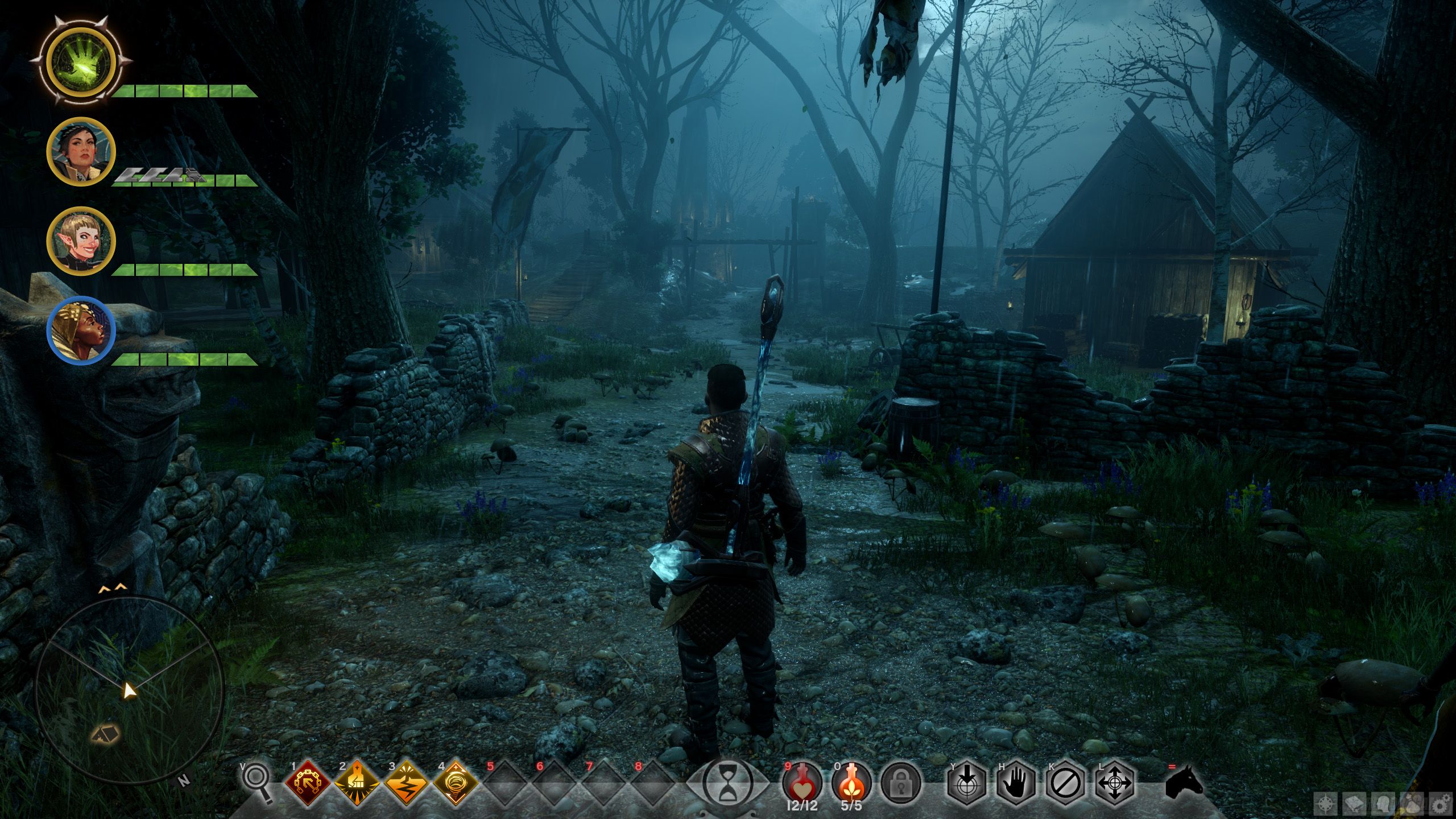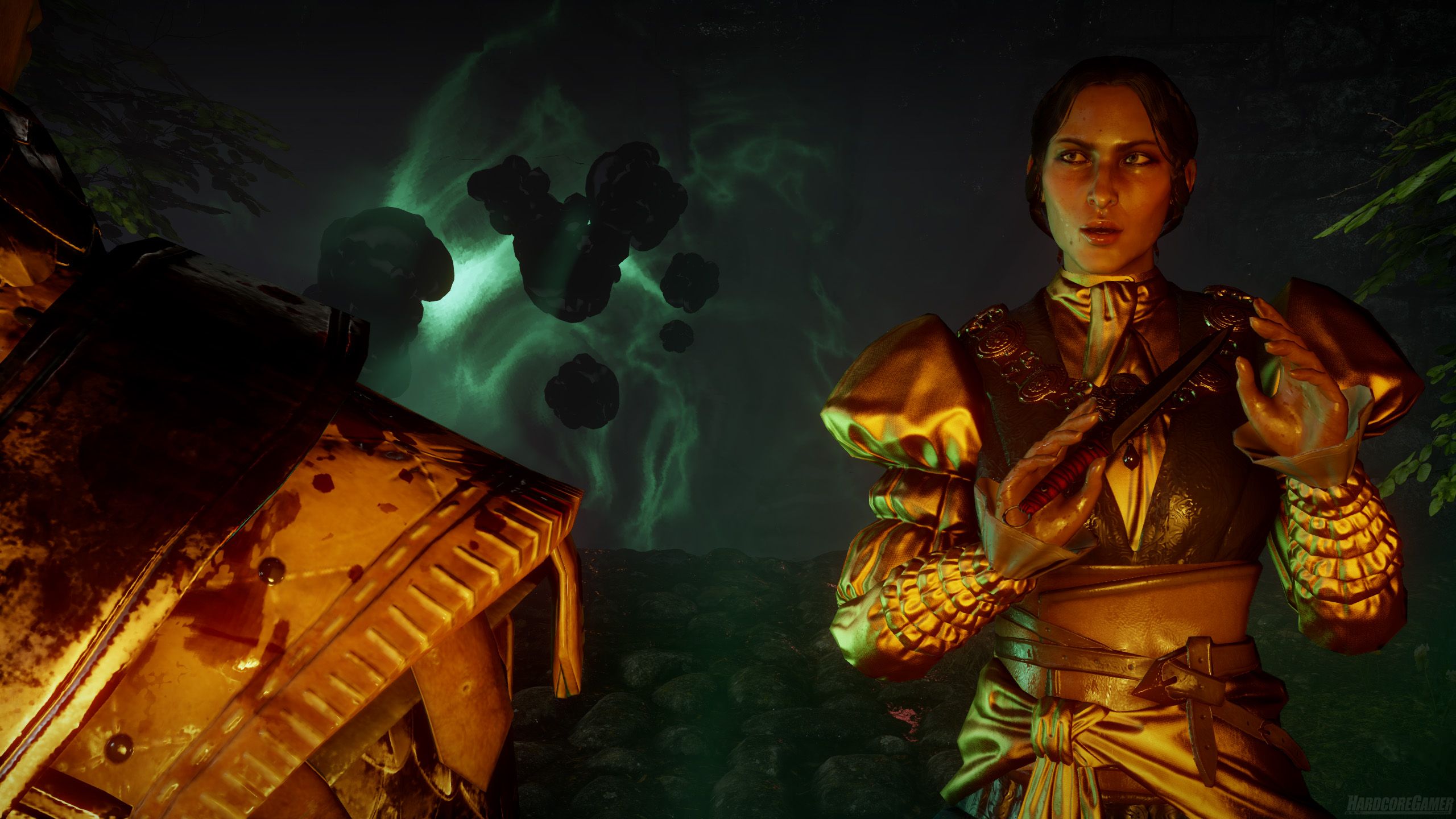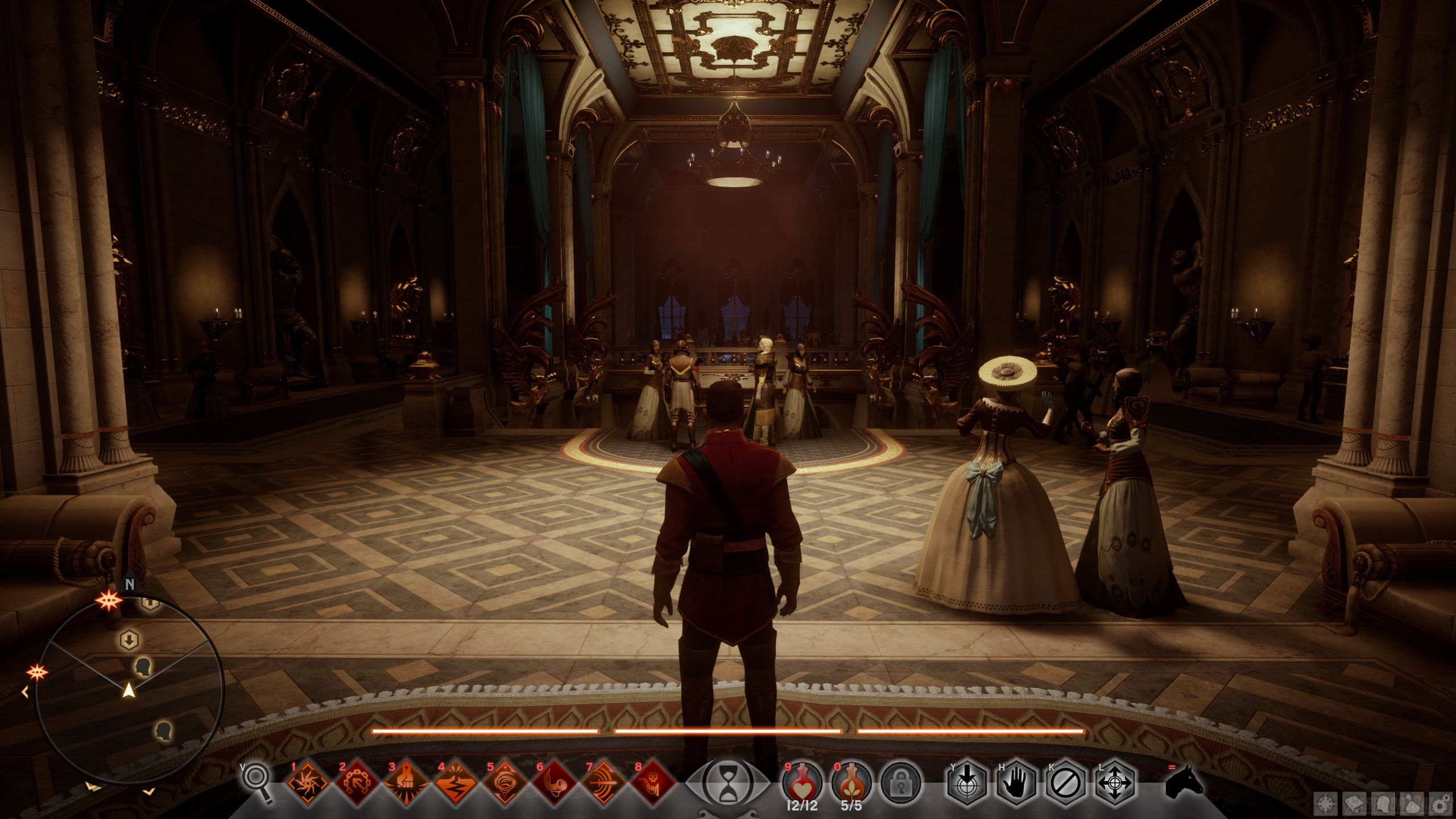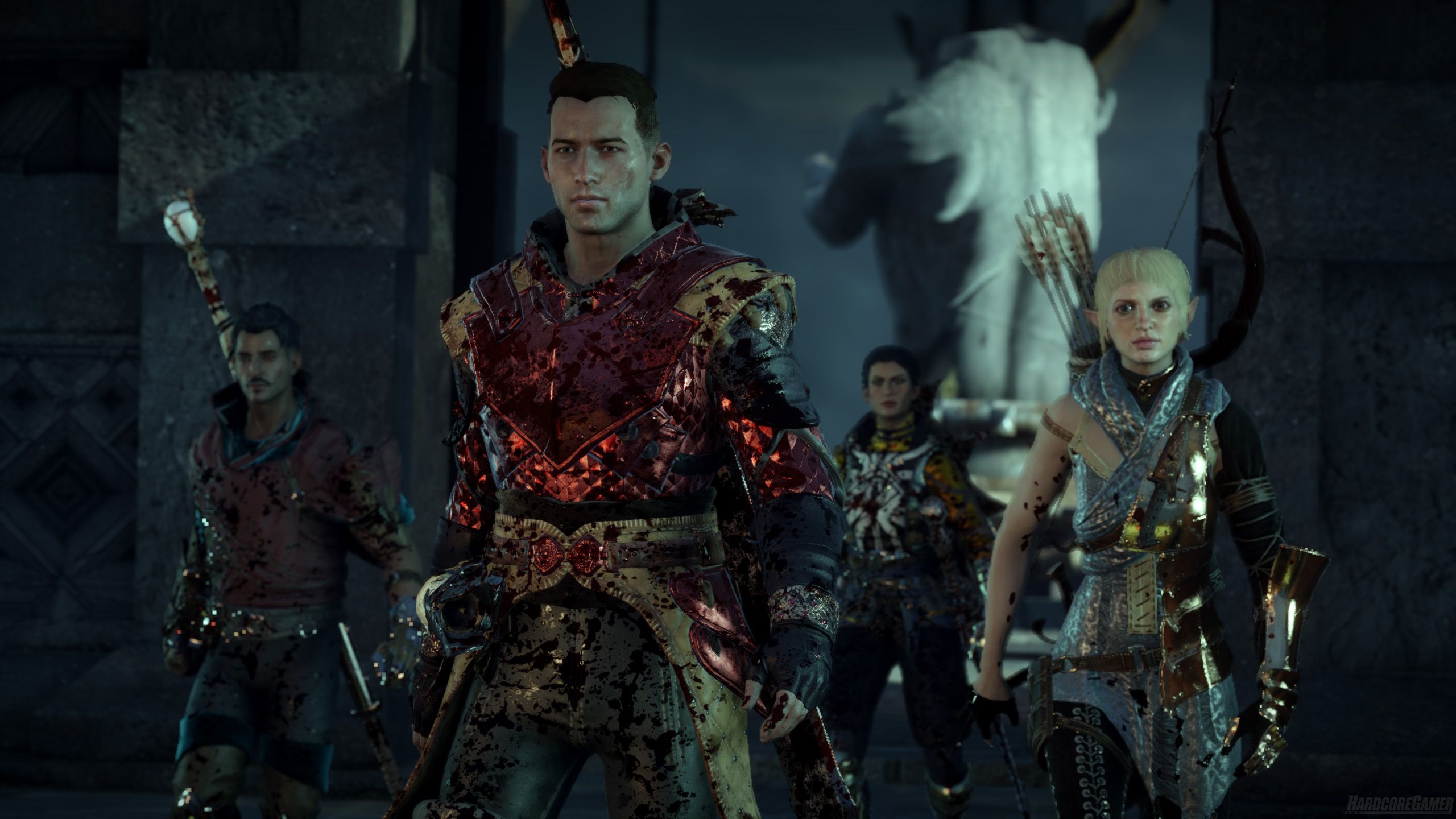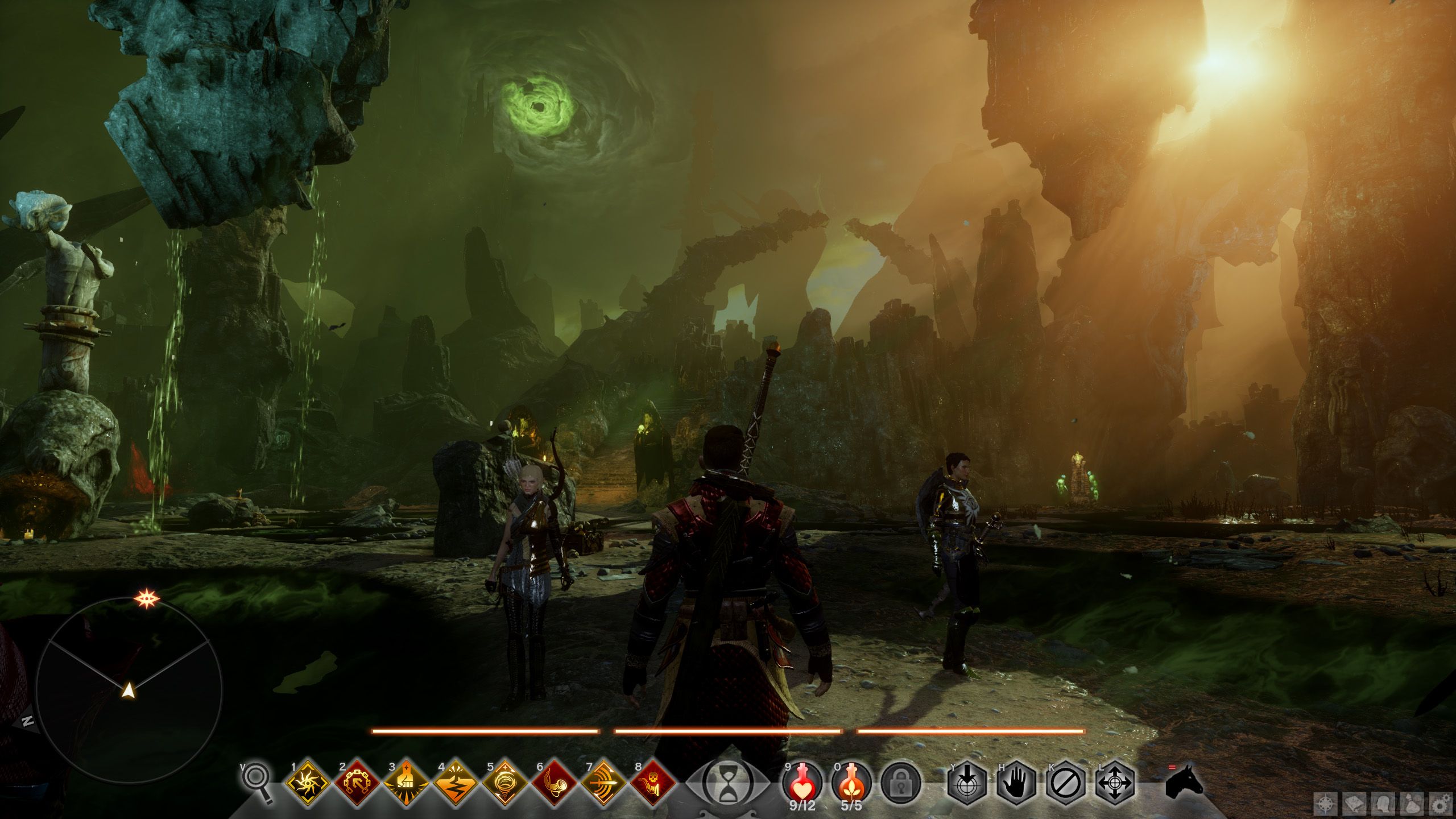When BioWare releases a game, it’s a spectacle of its own. This is a company well known for their incredible storytelling and affable cast, creating a world ripe with adventure. While the last game in the beloved series left many fans distraught over its quick one and a half year turn around, containing unpolished and overused visuals, they are making amends by taking their time to develop a title worth praising. With a vast open world to explore, intriguing characters to befriend, and a compelling adventure that’s molded to your liking, Dragon Age: Inquisition goes past what we’ve come to expect from the Canadian-based developer. An RPG of this magnitude doesn’t come around this often, but when it does, it sets the bar for the future of the genre.
The story takes place after the events of Dragon Age II where the Templars and Mages have convened to stop their endless squabble against one another. Unfortunately, a mysterious event occurs which leaves the protagonist in the middle of a crater with a magical power grafted to his hand, and the leaders of the two factions decimated. This starts the lengthy plot where demon-summoning portals called Rifts have appeared across Thedas, and it’s up to your newly found magical abilities to close them. The campaign is overwhelmingly large, taking anywhere between 50 and 100 hours to complete depending if you want to partake in the exhausting amount of side quests scattered across each region. Critical patching is available, but you are forced to adventure a little bit because main missions are only unlocked after obtaining specific amounts of “Power” which come from closing portals, crafting items and helping those in need. There’s an excellent balance between progressing through the main story and stopping to smell the roses in the beautiful open world setting.
With that said, those who decide to try and speed through the campaign will be missing out on the vast majority of what makes Dragon Age: Inquisition so impactful, as it contains some of the best characters to ever grace the franchise. The team itself is made up of a strong variety, ranging from egotism to borderline schizophrenia. Ironically, those two characters in particular have some of the best backgrounds to uncover. It’s seeing someone like the hardboiled Cassandra open up about something embarrassing, or the Iron Bull asking to be beat with a stick to help him get over an uneasy event that will bring a heartfelt smile to your face as you’ll quickly warm up to each in their own way. Even the rather dull Grey Warden Blackwall has an intense history he will share. It’s not only the strong ten playable characters (including the Inquisitor), but others who maintain residency in home base of Skyhold, such as the former Templar Cullen, the Spymaster Leliana, and the Elegant Ambassador Josephine. The way in which each character is developed is far beyond any form of video game storytelling, making even the least appealing personality something to dig deeper into.
This is all contributed to the writing as Dragon Age: Inquisition is just flowing with it. The sheer amount of dialogue that’s spoken and text that’s written for the fiction is arguably the most to ever grace a video game. It’s not just the volume in which it comes, but the quality is top notch, with story-related conversations and branching paths really defining characters. Player agency is a big part of the experience, as based on what is said during conversations and choices that are made during key moments, events will play out differently in the world. Comrades may disapprove of specific actions, which will show on screen, and if pushed past their limits, they may even leave the Inquisition all together. It’s not just what’s said during cutscenes and engaging with others via the dialogue wheel, but even adventuring through the wilderness, teammates will continuously converse with one another. Sometimes there are one-off talks that may involve story related events and how they’re coping with things, but other times they will have ongoing conversations with each other. Hearing Sera try to get Cassandra to guess her birthplace, or the attempts to get Dorian to realize how pompous he is can be hysterical and ensures, even during the hours of serious demon slaying, the chemistry between characters is lighthearted.
The world of Thedas is massive, and while past games were restricted to distinct locations, Inquisition ventures to all corners of the map. From the scorching desert to the frigid mountains, Thedas has never looked so appealing. A big complaint in Dragon Age II was that a lot of the side missions and dungeons reused assets to an alarming degree. That is completely the opposite in Dragon Age: Inquisition as the world itself has been finely crafted, with areas being specifically built for missions and adventure. This is a sprawling open world game to the greatest degree, and even though the world itself is segmented, forcing travel between regions, each location is overwhelmingly monstrous, taking hours to trek across. It’s not just an empty wasteland, either, but filled with various side missions to partake in, tons of meaningful collectibles to find, and scattered about material that can be used to build equipment and weapons. There are even fortresses in specific regions that can be liberated from opposing soldier factions, allowing you to build your own mini-Skyhold base. It’s one of the most dense and well-conceived open worlds to be found. Accidentally roaming into an area where you’re not supposed to be, such as one with giants and dragons, is exhilarating and paints the perfect fantasy setting.
These distinct locations can be accessed at Skyhold, the Inquisition’s fortress in the mountains. Here, the War Table is used to obtain missions, but also assigning activities for the council. Think of this as Assassin’s Creed Brotherhood’s Contract Missions where you’re able to send recruited and trained assassins on jobs to bring back materials. The difference is that a lot of the events on the board are unique, having long running stories behind them, and can only be assigned to one of the three members. Each mission is given a completion time, and it was smart to use real world time stamps rather than in-game ones as there are some that require more than 24 hours to complete. Depending how the council members wish to treat a situation, it will net different results, sometimes in gold, items and even influence. Influence is basically how the world views the Inquisition, and leveling it up will generate points to be spent on increasing inventory burden, vials of potions, extra XP per codex, and so much more. Party members will also sometimes give the Inquisitor objectives to look into if you dive deep into their conversation trees, and usually it will lead to character-specific missions that will put you on their good side. The War Table is an intelligent way to progress through the open world game, having to essentially buy a main mission with Power that’s obtained through doing the various activities around Thedas.
It’s not just the political and social matters that the Inquisition has to worry about, but it’s the hordes of demons, bandits, Venatori, and so many other enemies that imped their progress. The battle system is an important part of the Dragon Age universe as it has always been a very strategic and methodical process of placing party members in the right position. Combat feels a little more in line with the advancements of Dragon Age II, focusing on fast paced action rather than constantly barking orders. That’s not to say strategy isn’t here, and playing on PC there’s a tactical camera that resembles that of Origins’, but this is far flashier than ever before. For the most part it’s a good thing though; comrades will generally know what to do in the heat of combat, but it’s all determined how a team is structured. There are three mages, three rogues and three warriors outside of the Inquisitor that can be recruited, strongly hinting at what the makeup of a group should be. Each individual has their own unique traits, and being able to respec skills allows for much customization.
Combat itself is immensely satisfying, with each tang of a bow or slam of a staff, encounters will become even grander as the story progresses. Difficulty-wise, it’s nothing like Dragon Age: Origins where most engagements will mean your downfall if not properly prepared, but that’s not to say it’s easy, either. It strikes a good balance between the two, meaning it’s a little more accessible to others, while still maintaining a decent challenge, especially in scuffles against more gigantic, mythological creatures. This may have to do with opponents no longer being unique to their surroundings. Because this is an open world game, whether living or dead, enemies will respawn in areas, allowing the Inquisitor to grind if need be. Fortunately, experience points for defeating enemies is minimal in comparison to the various other tasks that can be completed, so it strongly encourages varying your playtime between activities and adventuring. There’s also a strong array of enemies, with even those pesky Darkspawn peeking their heads out from underneath their rock. It’s not just humanoid and demonic enemies either, but wildlife such as bears and wolves, not to mention more cold-blooded creatures. Dragons are some of the most thrilling battles you can have as, virtually each open area has one stationed somewhere, and they contain a distinct set of moves and magical abilities. Even over leveling will only provide minimal aid during battle as this is where setting your team to automatic is no longer advised.
No matter the title, a game published under the Electronic Arts flag must have some sort of online component, and Dragon Age: Inquisition is no different. Fortunately, it’s not a throwaway mode by any means, as it takes what BioWare did well in Mass Effect 3 and expands upon it greatly. This is entirely separate from the main campaign, so players won’t be forced to dip their toes to increase their chances at a better ending in the lengthy story, and it works quite well. Here, four players will be able to group together and venture through five zones, collecting loot on the way. Difficult ramps up as zones are cleared, and various branching opportunities to find hidden loot is given, depending what character classes are in the party. This is very different from the main campaign, obviously in progression as you won’t be running through open world environments, but how characters level up, as well. Experience will be distributed, unlocking skill points to be used in class-exclusive trees. These skill trees are relatively straight forward, but have enough branches that allow for customization within the character type, and there are many classes to unlock.
This is very much an early work for BioWare to build upon as there are only three multiplayer maps to participate in. Thankfully, each is well designed, from luscious Roman-esque architecture to dark and dreary underground ruins. With a lot more work, this could have been spun off into a free-to-play game of its own. This is mainly because there are microtransactions available to those who don’t want to grind their way through dungeons, but it’s not as simple as buying new classes or weapons. Instead, with either looted gold or platinum purchased with real money, chests of three sizes can be acquired and unlocks upwards of five random items and potions. For duplicates and unwanted gear, they can be broken down into material to be used to craft armor, weapons and even characters. The multiplayer offers a surprising amount of depth to those who can actually work together and put in the hours, and while BioWare has laid the groundwork for it to be built into something bigger, what they have here is more than enough to account for countless hours of amusement.
Being such an ambitious project, and using the power of DICE’s Frostbite 3 Engine, Inquisition sports phenomenal visual fidelity. As mentioned before, Dragon Age: Inquisition contains an overwhelming amount of variety in both character and environmental design, and this is contributed by the gorgeous artwork BioWare has implemented to their world. Color diversity helps breathe life into Thedas; from the dark downpour of the marshlands to the elegant city of Val Royeaux, entering a new location is a spectacle of its own. The inclusion of so many dragons only helps magnify the world’s size, as seeing them in the distance fighting giants or hanging about on a ruined castle really reminds you how little humans are in the grand scheme of things. Even though the graphics and artistic style are both absolutely beautiful, there is a small price to be paid in the form of longer than normal load times. On a standard hard drive, loading between cities and dungeons takes anywhere between a minute and a minute and a half. This can be countered by installing the game to an SSD, but not everyone has that luxury. Fortunately, because most areas are incredibly spacious, taking hours to get across and finding all of the goodies, load times become only a small part of the experience.
Closing Comments:
While BioWare is well known for their strong role-playing games, it’s perplexing how they were able to reach this level of quality with Dragon Age: Inquisition. It’s one of the most overwhelming experiences on the market, containing not only the best character development found in any RPG, but an open world that’s actually polished. The artistic and visual fidelity help with the immersion, but it’s the branching, player driven storyline and exquisitely layered combat system that create something special. Even with the staggering amount of dialogue and lore, newcomers to the franchise will have no trouble hopping right in, while old school fans will undoubtedly grin at the various call backs to past events. There’s even an enjoyable small multiplayer mode to participate in that’s entirely separated from the main campaign. Like a good hundred hour long novel that never lets up, Dragon Age: Inquisition is so engrossing you won’t be able to put it down.


